-
EXECUTIVE SUMMARY
-
Market Overview
-
Key Findings
-
Market Segmentation
-
Competitive Landscape
-
Challenges and Opportunities
-
Future Outlook
-
\r\n
-
MARKET INTRODUCTION
-
Definition
-
Scope of the study
- Research Objective
- Assumption
- Limitations
-
RESEARCH METHODOLOGY
-
Overview
-
Data Mining
-
Secondary Research
-
Primary Research
- Primary Interviews and Information Gathering Process
- Breakdown of Primary Respondents
-
Forecasting Model
-
Market Size Estimation
- Bottom-Up Approach
- Top-Down Approach
-
Data Triangulation
-
Validation
-
\r\n
-
MARKET DYNAMICS
-
Overview
-
Drivers
-
Restraints
-
Opportunities
-
MARKET FACTOR ANALYSIS
-
Value chain Analysis
-
Porter's Five Forces Analysis
- Bargaining Power of Suppliers
- Bargaining Power of Buyers
- Threat of New Entrants
- Threat of Substitutes
- Intensity of Rivalry
-
COVID-19 Impact Analysis
- Market Impact Analysis
- Regional Impact
- Opportunity and Threat Analysis
-
\r\n
-
RADIOPHARMACEUTICALS MARKET, BY APPLICATION (USD BILLION)
-
Diagnosis
-
Therapy
-
Research
-
RADIOPHARMACEUTICALS MARKET, BY TYPE (USD BILLION)
-
Diagnostic Radiopharmaceuticals
-
Therapeutic Radiopharmaceuticals
-
RADIOPHARMACEUTICALS MARKET, BY RADIOPHARMACEUTICAL CLASS (USD BILLION)
-
Radioisotopes
-
Radiolabeled Compounds
-
Radiopharmaceutical Generators
-
RADIOPHARMACEUTICALS MARKET, BY END USE (USD BILLION)
-
Hospitals
-
Diagnostic Imaging Centers
-
Research Institutions
-
RADIOPHARMACEUTICALS MARKET, BY REGIONAL (USD BILLION)
-
North America
- US
- Canada
-
Europe
- Germany
- UK
- France
- Russia
- Italy
- Spain
- Rest of Europe
-
APAC
- China
- India
- Japan
- South Korea
- Malaysia
- Thailand
- Indonesia
- Rest of APAC
-
South America
- Brazil
- Mexico
- Argentina
- Rest of South America
-
MEA
- GCC Countries
- South Africa
- Rest of MEA
-
\r\n
-
COMPETITIVE LANDSCAPE
-
Overview
-
Competitive Analysis
-
Market share Analysis
-
Major Growth Strategy in the Radiopharmaceuticals Market
-
Competitive Benchmarking
-
Leading Players in Terms of Number of Developments in the Radiopharmaceuticals Market
-
Key developments and growth strategies
- New Product Launch/Service Deployment
- Merger & Acquisitions
- Joint Ventures
-
Major Players Financial Matrix
- Sales and Operating Income
- Major Players R&D Expenditure. 2023
-
COMPANY PROFILES
-
Bracco Imaging
- Financial Overview
- Products Offered
- Key Developments
- SWOT Analysis
- Key Strategies
-
Novartis
- Financial Overview
- Products Offered
- Key Developments
- SWOT Analysis
- Key Strategies
-
Bayer
- Financial Overview
- Products Offered
- Key Developments
- SWOT Analysis
- Key Strategies
-
General Electric
- Financial Overview
- Products Offered
- Key Developments
- SWOT Analysis
- Key Strategies
-
Draximage
- Financial Overview
- Products Offered
- Key Developments
- SWOT Analysis
- Key Strategies
-
Actinium Pharmaceuticals
- Financial Overview
- Products Offered
- Key Developments
- SWOT Analysis
- Key Strategies
-
Lantheus Medical Imaging
- Financial Overview
- Products Offered
- Key Developments
- SWOT Analysis
- Key Strategies
-
Siemens Healthineers
- Financial Overview
- Products Offered
- Key Developments
- SWOT Analysis
- Key Strategies
-
Elekta
- Financial Overview
- Products Offered
- Key Developments
- SWOT Analysis
- Key Strategies
-
NorthStar Medical Radioisotopes
- Financial Overview
- Products Offered
- Key Developments
- SWOT Analysis
- Key Strategies
-
Ion Beam Applications
- Financial Overview
- Products Offered
- Key Developments
- SWOT Analysis
- Key Strategies
-
Cardinal Health
- Financial Overview
- Products Offered
- Key Developments
- SWOT Analysis
- Key Strategies
-
TheraSource
- Financial Overview
- Products Offered
- Key Developments
- SWOT Analysis
- Key Strategies
-
BristolMyers Squibb
- Financial Overview
- Products Offered
- Key Developments
- SWOT Analysis
- Key Strategies
-
AbbVie
- Financial Overview
- Products Offered
- Key Developments
- SWOT Analysis
- Key Strategies
-
APPENDIX
-
References
-
Related Reports
-
LIST OF TABLES
-
\r\n
-
LIST OF ASSUMPTIONS
-
NORTH AMERICA RADIOPHARMACEUTICALS MARKET SIZE ESTIMATES & FORECAST, BY APPLICATION, 2019-2035 (USD BILLIONS)
-
NORTH AMERICA RADIOPHARMACEUTICALS MARKET SIZE ESTIMATES & FORECAST, BY TYPE, 2019-2035 (USD BILLIONS)
-
NORTH AMERICA RADIOPHARMACEUTICALS MARKET SIZE ESTIMATES & FORECAST, BY RADIOPHARMACEUTICAL CLASS, 2019-2035 (USD BILLIONS)
-
NORTH AMERICA RADIOPHARMACEUTICALS MARKET SIZE ESTIMATES & FORECAST, BY END USE, 2019-2035 (USD BILLIONS)
-
NORTH AMERICA RADIOPHARMACEUTICALS MARKET SIZE ESTIMATES & FORECAST, BY REGIONAL, 2019-2035 (USD BILLIONS)
-
US RADIOPHARMACEUTICALS MARKET SIZE ESTIMATES & FORECAST, BY APPLICATION, 2019-2035 (USD BILLIONS)
-
US RADIOPHARMACEUTICALS MARKET SIZE ESTIMATES & FORECAST, BY TYPE, 2019-2035 (USD BILLIONS)
-
US RADIOPHARMACEUTICALS MARKET SIZE ESTIMATES & FORECAST, BY RADIOPHARMACEUTICAL CLASS, 2019-2035 (USD BILLIONS)
-
US RADIOPHARMACEUTICALS MARKET SIZE ESTIMATES & FORECAST, BY END USE, 2019-2035 (USD BILLIONS)
-
US RADIOPHARMACEUTICALS MARKET SIZE ESTIMATES & FORECAST, BY REGIONAL, 2019-2035 (USD BILLIONS)
-
CANADA RADIOPHARMACEUTICALS MARKET SIZE ESTIMATES & FORECAST, BY APPLICATION, 2019-2035 (USD BILLIONS)
-
CANADA RADIOPHARMACEUTICALS MARKET SIZE ESTIMATES & FORECAST, BY TYPE, 2019-2035 (USD BILLIONS)
-
CANADA RADIOPHARMACEUTICALS MARKET SIZE ESTIMATES & FORECAST, BY RADIOPHARMACEUTICAL CLASS, 2019-2035 (USD BILLIONS)
-
CANADA RADIOPHARMACEUTICALS MARKET SIZE ESTIMATES & FORECAST, BY END USE, 2019-2035 (USD BILLIONS)
-
CANADA RADIOPHARMACEUTICALS MARKET SIZE ESTIMATES & FORECAST, BY REGIONAL, 2019-2035 (USD BILLIONS)
-
EUROPE RADIOPHARMACEUTICALS MARKET SIZE ESTIMATES & FORECAST, BY APPLICATION, 2019-2035 (USD BILLIONS)
-
EUROPE RADIOPHARMACEUTICALS MARKET SIZE ESTIMATES & FORECAST, BY TYPE, 2019-2035 (USD BILLIONS)
-
EUROPE RADIOPHARMACEUTICALS MARKET SIZE ESTIMATES & FORECAST, BY RADIOPHARMACEUTICAL CLASS, 2019-2035 (USD BILLIONS)
-
EUROPE RADIOPHARMACEUTICALS MARKET SIZE ESTIMATES & FORECAST, BY END USE, 2019-2035 (USD BILLIONS)
-
EUROPE RADIOPHARMACEUTICALS MARKET SIZE ESTIMATES & FORECAST, BY REGIONAL, 2019-2035 (USD BILLIONS)
-
GERMANY RADIOPHARMACEUTICALS MARKET SIZE ESTIMATES & FORECAST, BY APPLICATION, 2019-2035 (USD BILLIONS)
-
GERMANY RADIOPHARMACEUTICALS MARKET SIZE ESTIMATES & FORECAST, BY TYPE, 2019-2035 (USD BILLIONS)
-
GERMANY RADIOPHARMACEUTICALS MARKET SIZE ESTIMATES & FORECAST, BY RADIOPHARMACEUTICAL CLASS, 2019-2035 (USD BILLIONS)
-
GERMANY RADIOPHARMACEUTICALS MARKET SIZE ESTIMATES & FORECAST, BY END USE, 2019-2035 (USD BILLIONS)
-
GERMANY RADIOPHARMACEUTICALS MARKET SIZE ESTIMATES & FORECAST, BY REGIONAL, 2019-2035 (USD BILLIONS)
-
UK RADIOPHARMACEUTICALS MARKET SIZE ESTIMATES & FORECAST, BY APPLICATION, 2019-2035 (USD BILLIONS)
-
UK RADIOPHARMACEUTICALS MARKET SIZE ESTIMATES & FORECAST, BY TYPE, 2019-2035 (USD BILLIONS)
-
UK RADIOPHARMACEUTICALS MARKET SIZE ESTIMATES & FORECAST, BY RADIOPHARMACEUTICAL CLASS, 2019-2035 (USD BILLIONS)
-
UK RADIOPHARMACEUTICALS MARKET SIZE ESTIMATES & FORECAST, BY END USE, 2019-2035 (USD BILLIONS)
-
UK RADIOPHARMACEUTICALS MARKET SIZE ESTIMATES & FORECAST, BY REGIONAL, 2019-2035 (USD BILLIONS)
-
FRANCE RADIOPHARMACEUTICALS MARKET SIZE ESTIMATES & FORECAST, BY APPLICATION, 2019-2035 (USD BILLIONS)
-
FRANCE RADIOPHARMACEUTICALS MARKET SIZE ESTIMATES & FORECAST, BY TYPE, 2019-2035 (USD BILLIONS)
-
FRANCE RADIOPHARMACEUTICALS MARKET SIZE ESTIMATES & FORECAST, BY RADIOPHARMACEUTICAL CLASS, 2019-2035 (USD BILLIONS)
-
FRANCE RADIOPHARMACEUTICALS MARKET SIZE ESTIMATES & FORECAST, BY END USE, 2019-2035 (USD BILLIONS)
-
FRANCE RADIOPHARMACEUTICALS MARKET SIZE ESTIMATES & FORECAST, BY REGIONAL, 2019-2035 (USD BILLIONS)
-
RUSSIA RADIOPHARMACEUTICALS MARKET SIZE ESTIMATES & FORECAST, BY APPLICATION, 2019-2035 (USD BILLIONS)
-
RUSSIA RADIOPHARMACEUTICALS MARKET SIZE ESTIMATES & FORECAST, BY TYPE, 2019-2035 (USD BILLIONS)
-
RUSSIA RADIOPHARMACEUTICALS MARKET SIZE ESTIMATES & FORECAST, BY RADIOPHARMACEUTICAL CLASS, 2019-2035 (USD BILLIONS)
-
RUSSIA RADIOPHARMACEUTICALS MARKET SIZE ESTIMATES & FORECAST, BY END USE, 2019-2035 (USD BILLIONS)
-
RUSSIA RADIOPHARMACEUTICALS MARKET SIZE ESTIMATES & FORECAST, BY REGIONAL, 2019-2035 (USD BILLIONS)
-
ITALY RADIOPHARMACEUTICALS MARKET SIZE ESTIMATES & FORECAST, BY APPLICATION, 2019-2035 (USD BILLIONS)
-
ITALY RADIOPHARMACEUTICALS MARKET SIZE ESTIMATES & FORECAST, BY TYPE, 2019-2035 (USD BILLIONS)
-
ITALY RADIOPHARMACEUTICALS MARKET SIZE ESTIMATES & FORECAST, BY RADIOPHARMACEUTICAL CLASS, 2019-2035 (USD BILLIONS)
-
ITALY RADIOPHARMACEUTICALS MARKET SIZE ESTIMATES & FORECAST, BY END USE, 2019-2035 (USD BILLIONS)
-
ITALY RADIOPHARMACEUTICALS MARKET SIZE ESTIMATES & FORECAST, BY REGIONAL, 2019-2035 (USD BILLIONS)
-
SPAIN RADIOPHARMACEUTICALS MARKET SIZE ESTIMATES & FORECAST, BY APPLICATION, 2019-2035 (USD BILLIONS)
-
SPAIN RADIOPHARMACEUTICALS MARKET SIZE ESTIMATES & FORECAST, BY TYPE, 2019-2035 (USD BILLIONS)
-
SPAIN RADIOPHARMACEUTICALS MARKET SIZE ESTIMATES & FORECAST, BY RADIOPHARMACEUTICAL CLASS, 2019-2035 (USD BILLIONS)
-
SPAIN RADIOPHARMACEUTICALS MARKET SIZE ESTIMATES & FORECAST, BY END USE, 2019-2035 (USD BILLIONS)
-
SPAIN RADIOPHARMACEUTICALS MARKET SIZE ESTIMATES & FORECAST, BY REGIONAL, 2019-2035 (USD BILLIONS)
-
REST OF EUROPE RADIOPHARMACEUTICALS MARKET SIZE ESTIMATES & FORECAST, BY APPLICATION, 2019-2035 (USD BILLIONS)
-
REST OF EUROPE RADIOPHARMACEUTICALS MARKET SIZE ESTIMATES & FORECAST, BY TYPE, 2019-2035 (USD BILLIONS)
-
REST OF EUROPE RADIOPHARMACEUTICALS MARKET SIZE ESTIMATES & FORECAST, BY RADIOPHARMACEUTICAL CLASS, 2019-2035 (USD BILLIONS)
-
REST OF EUROPE RADIOPHARMACEUTICALS MARKET SIZE ESTIMATES & FORECAST, BY END USE, 2019-2035 (USD BILLIONS)
-
REST OF EUROPE RADIOPHARMACEUTICALS MARKET SIZE ESTIMATES & FORECAST, BY REGIONAL, 2019-2035 (USD BILLIONS)
-
APAC RADIOPHARMACEUTICALS MARKET SIZE ESTIMATES & FORECAST, BY APPLICATION, 2019-2035 (USD BILLIONS)
-
APAC RADIOPHARMACEUTICALS MARKET SIZE ESTIMATES & FORECAST, BY TYPE, 2019-2035 (USD BILLIONS)
-
APAC RADIOPHARMACEUTICALS MARKET SIZE ESTIMATES & FORECAST, BY RADIOPHARMACEUTICAL CLASS, 2019-2035 (USD BILLIONS)
-
APAC RADIOPHARMACEUTICALS MARKET SIZE ESTIMATES & FORECAST, BY END USE, 2019-2035 (USD BILLIONS)
-
APAC RADIOPHARMACEUTICALS MARKET SIZE ESTIMATES & FORECAST, BY REGIONAL, 2019-2035 (USD BILLIONS)
-
CHINA RADIOPHARMACEUTICALS MARKET SIZE ESTIMATES & FORECAST, BY APPLICATION, 2019-2035 (USD BILLIONS)
-
CHINA RADIOPHARMACEUTICALS MARKET SIZE ESTIMATES & FORECAST, BY TYPE, 2019-2035 (USD BILLIONS)
-
CHINA RADIOPHARMACEUTICALS MARKET SIZE ESTIMATES & FORECAST, BY RADIOPHARMACEUTICAL CLASS, 2019-2035 (USD BILLIONS)
-
CHINA RADIOPHARMACEUTICALS MARKET SIZE ESTIMATES & FORECAST, BY END USE, 2019-2035 (USD BILLIONS)
-
CHINA RADIOPHARMACEUTICALS MARKET SIZE ESTIMATES & FORECAST, BY REGIONAL, 2019-2035 (USD BILLIONS)
-
INDIA RADIOPHARMACEUTICALS MARKET SIZE ESTIMATES & FORECAST, BY APPLICATION, 2019-2035 (USD BILLIONS)
-
INDIA RADIOPHARMACEUTICALS MARKET SIZE ESTIMATES & FORECAST, BY TYPE, 2019-2035 (USD BILLIONS)
-
INDIA RADIOPHARMACEUTICALS MARKET SIZE ESTIMATES & FORECAST, BY RADIOPHARMACEUTICAL CLASS, 2019-2035 (USD BILLIONS)
-
INDIA RADIOPHARMACEUTICALS MARKET SIZE ESTIMATES & FORECAST, BY END USE, 2019-2035 (USD BILLIONS)
-
INDIA RADIOPHARMACEUTICALS MARKET SIZE ESTIMATES & FORECAST, BY REGIONAL, 2019-2035 (USD BILLIONS)
-
JAPAN RADIOPHARMACEUTICALS MARKET SIZE ESTIMATES & FORECAST, BY APPLICATION, 2019-2035 (USD BILLIONS)
-
JAPAN RADIOPHARMACEUTICALS MARKET SIZE ESTIMATES & FORECAST, BY TYPE, 2019-2035 (USD BILLIONS)
-
JAPAN RADIOPHARMACEUTICALS MARKET SIZE ESTIMATES & FORECAST, BY RADIOPHARMACEUTICAL CLASS, 2019-2035 (USD BILLIONS)
-
JAPAN RADIOPHARMACEUTICALS MARKET SIZE ESTIMATES & FORECAST, BY END USE, 2019-2035 (USD BILLIONS)
-
JAPAN RADIOPHARMACEUTICALS MARKET SIZE ESTIMATES & FORECAST, BY REGIONAL, 2019-2035 (USD BILLIONS)
-
SOUTH KOREA RADIOPHARMACEUTICALS MARKET SIZE ESTIMATES & FORECAST, BY APPLICATION, 2019-2035 (USD BILLIONS)
-
SOUTH KOREA RADIOPHARMACEUTICALS MARKET SIZE ESTIMATES & FORECAST, BY TYPE, 2019-2035 (USD BILLIONS)
-
SOUTH KOREA RADIOPHARMACEUTICALS MARKET SIZE ESTIMATES & FORECAST, BY RADIOPHARMACEUTICAL CLASS, 2019-2035 (USD BILLIONS)
-
SOUTH KOREA RADIOPHARMACEUTICALS MARKET SIZE ESTIMATES & FORECAST, BY END USE, 2019-2035 (USD BILLIONS)
-
SOUTH KOREA RADIOPHARMACEUTICALS MARKET SIZE ESTIMATES & FORECAST, BY REGIONAL, 2019-2035 (USD BILLIONS)
-
MALAYSIA RADIOPHARMACEUTICALS MARKET SIZE ESTIMATES & FORECAST, BY APPLICATION, 2019-2035 (USD BILLIONS)
-
MALAYSIA RADIOPHARMACEUTICALS MARKET SIZE ESTIMATES & FORECAST, BY TYPE, 2019-2035 (USD BILLIONS)
-
MALAYSIA RADIOPHARMACEUTICALS MARKET SIZE ESTIMATES & FORECAST, BY RADIOPHARMACEUTICAL CLASS, 2019-2035 (USD BILLIONS)
-
MALAYSIA RADIOPHARMACEUTICALS MARKET SIZE ESTIMATES & FORECAST, BY END USE, 2019-2035 (USD BILLIONS)
-
MALAYSIA RADIOPHARMACEUTICALS MARKET SIZE ESTIMATES & FORECAST, BY REGIONAL, 2019-2035 (USD BILLIONS)
-
THAILAND RADIOPHARMACEUTICALS MARKET SIZE ESTIMATES & FORECAST, BY APPLICATION, 2019-2035 (USD BILLIONS)
-
THAILAND RADIOPHARMACEUTICALS MARKET SIZE ESTIMATES & FORECAST, BY TYPE, 2019-2035 (USD BILLIONS)
-
THAILAND RADIOPHARMACEUTICALS MARKET SIZE ESTIMATES & FORECAST, BY RADIOPHARMACEUTICAL CLASS, 2019-2035 (USD BILLIONS)
-
THAILAND RADIOPHARMACEUTICALS MARKET SIZE ESTIMATES & FORECAST, BY END USE, 2019-2035 (USD BILLIONS)
-
THAILAND RADIOPHARMACEUTICALS MARKET SIZE ESTIMATES & FORECAST, BY REGIONAL, 2019-2035 (USD BILLIONS)
-
INDONESIA RADIOPHARMACEUTICALS MARKET SIZE ESTIMATES & FORECAST, BY APPLICATION, 2019-2035 (USD BILLIONS)
-
INDONESIA RADIOPHARMACEUTICALS MARKET SIZE ESTIMATES & FORECAST, BY TYPE, 2019-2035 (USD BILLIONS)
-
INDONESIA RADIOPHARMACEUTICALS MARKET SIZE ESTIMATES & FORECAST, BY RADIOPHARMACEUTICAL CLASS, 2019-2035 (USD BILLIONS)
-
INDONESIA RADIOPHARMACEUTICALS MARKET SIZE ESTIMATES & FORECAST, BY END USE, 2019-2035 (USD BILLIONS)
-
INDONESIA RADIOPHARMACEUTICALS MARKET SIZE ESTIMATES & FORECAST, BY REGIONAL, 2019-2035 (USD BILLIONS)
-
REST OF APAC RADIOPHARMACEUTICALS MARKET SIZE ESTIMATES & FORECAST, BY APPLICATION, 2019-2035 (USD BILLIONS)
-
REST OF APAC RADIOPHARMACEUTICALS MARKET SIZE ESTIMATES & FORECAST, BY TYPE, 2019-2035 (USD BILLIONS)
-
REST OF APAC RADIOPHARMACEUTICALS MARKET SIZE ESTIMATES & FORECAST, BY RADIOPHARMACEUTICAL CLASS, 2019-2035 (USD BILLIONS)
-
REST OF APAC RADIOPHARMACEUTICALS MARKET SIZE ESTIMATES & FORECAST, BY END USE, 2019-2035 (USD BILLIONS)
-
REST OF APAC RADIOPHARMACEUTICALS MARKET SIZE ESTIMATES & FORECAST, BY REGIONAL, 2019-2035 (USD BILLIONS)
-
SOUTH AMERICA RADIOPHARMACEUTICALS MARKET SIZE ESTIMATES & FORECAST, BY APPLICATION, 2019-2035 (USD BILLIONS)
-
SOUTH AMERICA RADIOPHARMACEUTICALS MARKET SIZE ESTIMATES & FORECAST, BY TYPE, 2019-2035 (USD BILLIONS)
-
SOUTH AMERICA RADIOPHARMACEUTICALS MARKET SIZE ESTIMATES & FORECAST, BY RADIOPHARMACEUTICAL CLASS, 2019-2035 (USD BILLIONS)
-
SOUTH AMERICA RADIOPHARMACEUTICALS MARKET SIZE ESTIMATES & FORECAST, BY END USE, 2019-2035 (USD BILLIONS)
-
SOUTH AMERICA RADIOPHARMACEUTICALS MARKET SIZE ESTIMATES & FORECAST, BY REGIONAL, 2019-2035 (USD BILLIONS)
-
BRAZIL RADIOPHARMACEUTICALS MARKET SIZE ESTIMATES & FORECAST, BY APPLICATION, 2019-2035 (USD BILLIONS)
-
BRAZIL RADIOPHARMACEUTICALS MARKET SIZE ESTIMATES & FORECAST, BY TYPE, 2019-2035 (USD BILLIONS)
-
BRAZIL RADIOPHARMACEUTICALS MARKET SIZE ESTIMATES & FORECAST, BY RADIOPHARMACEUTICAL CLASS, 2019-2035 (USD BILLIONS)
-
BRAZIL RADIOPHARMACEUTICALS MARKET SIZE ESTIMATES & FORECAST, BY END USE, 2019-2035 (USD BILLIONS)
-
BRAZIL RADIOPHARMACEUTICALS MARKET SIZE ESTIMATES & FORECAST, BY REGIONAL, 2019-2035 (USD BILLIONS)
-
MEXICO RADIOPHARMACEUTICALS MARKET SIZE ESTIMATES & FORECAST, BY APPLICATION, 2019-2035 (USD BILLIONS)
-
MEXICO RADIOPHARMACEUTICALS MARKET SIZE ESTIMATES & FORECAST, BY TYPE, 2019-2035 (USD BILLIONS)
-
MEXICO RADIOPHARMACEUTICALS MARKET SIZE ESTIMATES & FORECAST, BY RADIOPHARMACEUTICAL CLASS, 2019-2035 (USD BILLIONS)
-
MEXICO RADIOPHARMACEUTICALS MARKET SIZE ESTIMATES & FORECAST, BY END USE, 2019-2035 (USD BILLIONS)
-
MEXICO RADIOPHARMACEUTICALS MARKET SIZE ESTIMATES & FORECAST, BY REGIONAL, 2019-2035 (USD BILLIONS)
-
ARGENTINA RADIOPHARMACEUTICALS MARKET SIZE ESTIMATES & FORECAST, BY APPLICATION, 2019-2035 (USD BILLIONS)
-
ARGENTINA RADIOPHARMACEUTICALS MARKET SIZE ESTIMATES & FORECAST, BY TYPE, 2019-2035 (USD BILLIONS)
-
ARGENTINA RADIOPHARMACEUTICALS MARKET SIZE ESTIMATES & FORECAST, BY RADIOPHARMACEUTICAL CLASS, 2019-2035 (USD BILLIONS)
-
ARGENTINA RADIOPHARMACEUTICALS MARKET SIZE ESTIMATES & FORECAST, BY END USE, 2019-2035 (USD BILLIONS)
-
ARGENTINA RADIOPHARMACEUTICALS MARKET SIZE ESTIMATES & FORECAST, BY REGIONAL, 2019-2035 (USD BILLIONS)
-
REST OF SOUTH AMERICA RADIOPHARMACEUTICALS MARKET SIZE ESTIMATES & FORECAST, BY APPLICATION, 2019-2035 (USD BILLIONS)
-
REST OF SOUTH AMERICA RADIOPHARMACEUTICALS MARKET SIZE ESTIMATES & FORECAST, BY TYPE, 2019-2035 (USD BILLIONS)
-
REST OF SOUTH AMERICA RADIOPHARMACEUTICALS MARKET SIZE ESTIMATES & FORECAST, BY RADIOPHARMACEUTICAL CLASS, 2019-2035 (USD BILLIONS)
-
REST OF SOUTH AMERICA RADIOPHARMACEUTICALS MARKET SIZE ESTIMATES & FORECAST, BY END USE, 2019-2035 (USD BILLIONS)
-
REST OF SOUTH AMERICA RADIOPHARMACEUTICALS MARKET SIZE ESTIMATES & FORECAST, BY REGIONAL, 2019-2035 (USD BILLIONS)
-
MEA RADIOPHARMACEUTICALS MARKET SIZE ESTIMATES & FORECAST, BY APPLICATION, 2019-2035 (USD BILLIONS)
-
MEA RADIOPHARMACEUTICALS MARKET SIZE ESTIMATES & FORECAST, BY TYPE, 2019-2035 (USD BILLIONS)
-
MEA RADIOPHARMACEUTICALS MARKET SIZE ESTIMATES & FORECAST, BY RADIOPHARMACEUTICAL CLASS, 2019-2035 (USD BILLIONS)
-
MEA RADIOPHARMACEUTICALS MARKET SIZE ESTIMATES & FORECAST, BY END USE, 2019-2035 (USD BILLIONS)
-
MEA RADIOPHARMACEUTICALS MARKET SIZE ESTIMATES & FORECAST, BY REGIONAL, 2019-2035 (USD BILLIONS)
-
GCC COUNTRIES RADIOPHARMACEUTICALS MARKET SIZE ESTIMATES & FORECAST, BY APPLICATION, 2019-2035 (USD BILLIONS)
-
GCC COUNTRIES RADIOPHARMACEUTICALS MARKET SIZE ESTIMATES & FORECAST, BY TYPE, 2019-2035 (USD BILLIONS)
-
GCC COUNTRIES RADIOPHARMACEUTICALS MARKET SIZE ESTIMATES & FORECAST, BY RADIOPHARMACEUTICAL CLASS, 2019-2035 (USD BILLIONS)
-
GCC COUNTRIES RADIOPHARMACEUTICALS MARKET SIZE ESTIMATES & FORECAST, BY END USE, 2019-2035 (USD BILLIONS)
-
GCC COUNTRIES RADIOPHARMACEUTICALS MARKET SIZE ESTIMATES & FORECAST, BY REGIONAL, 2019-2035 (USD BILLIONS)
-
SOUTH AFRICA RADIOPHARMACEUTICALS MARKET SIZE ESTIMATES & FORECAST, BY APPLICATION, 2019-2035 (USD BILLIONS)
-
SOUTH AFRICA RADIOPHARMACEUTICALS MARKET SIZE ESTIMATES & FORECAST, BY TYPE, 2019-2035 (USD BILLIONS)
-
SOUTH AFRICA RADIOPHARMACEUTICALS MARKET SIZE ESTIMATES & FORECAST, BY RADIOPHARMACEUTICAL CLASS, 2019-2035 (USD BILLIONS)
-
SOUTH AFRICA RADIOPHARMACEUTICALS MARKET SIZE ESTIMATES & FORECAST, BY END USE, 2019-2035 (USD BILLIONS)
-
SOUTH AFRICA RADIOPHARMACEUTICALS MARKET SIZE ESTIMATES & FORECAST, BY REGIONAL, 2019-2035 (USD BILLIONS)
-
REST OF MEA RADIOPHARMACEUTICALS MARKET SIZE ESTIMATES & FORECAST, BY APPLICATION, 2019-2035 (USD BILLIONS)
-
REST OF MEA RADIOPHARMACEUTICALS MARKET SIZE ESTIMATES & FORECAST, BY TYPE, 2019-2035 (USD BILLIONS)
-
REST OF MEA RADIOPHARMACEUTICALS MARKET SIZE ESTIMATES & FORECAST, BY RADIOPHARMACEUTICAL CLASS, 2019-2035 (USD BILLIONS)
-
REST OF MEA RADIOPHARMACEUTICALS MARKET SIZE ESTIMATES & FORECAST, BY END USE, 2019-2035 (USD BILLIONS)
-
REST OF MEA RADIOPHARMACEUTICALS MARKET SIZE ESTIMATES & FORECAST, BY REGIONAL, 2019-2035 (USD BILLIONS)
-
PRODUCT LAUNCH/PRODUCT DEVELOPMENT/APPROVAL
-
ACQUISITION/PARTNERSHIP
-
\r\n
-
\r\n
-
\r\n
-
\r\n
-
\r\n
-
\r\n
-
\r\n
-
\r\n
-
\r\n
-
\r\n
-
\r\n
-
\r\n
-
\r\n
-
\r\n
-
\r\n
-
LIST OF FIGURES
-
\r\n
-
MARKET SYNOPSIS
-
NORTH AMERICA RADIOPHARMACEUTICALS MARKET ANALYSIS
-
US RADIOPHARMACEUTICALS MARKET ANALYSIS BY APPLICATION
-
US RADIOPHARMACEUTICALS MARKET ANALYSIS BY TYPE
-
US RADIOPHARMACEUTICALS MARKET ANALYSIS BY RADIOPHARMACEUTICAL CLASS
-
US RADIOPHARMACEUTICALS MARKET ANALYSIS BY END USE
-
US RADIOPHARMACEUTICALS MARKET ANALYSIS BY REGIONAL
-
CANADA RADIOPHARMACEUTICALS MARKET ANALYSIS BY APPLICATION
-
CANADA RADIOPHARMACEUTICALS MARKET ANALYSIS BY TYPE
-
CANADA RADIOPHARMACEUTICALS MARKET ANALYSIS BY RADIOPHARMACEUTICAL CLASS
-
CANADA RADIOPHARMACEUTICALS MARKET ANALYSIS BY END USE
-
CANADA RADIOPHARMACEUTICALS MARKET ANALYSIS BY REGIONAL
-
EUROPE RADIOPHARMACEUTICALS MARKET ANALYSIS
-
GERMANY RADIOPHARMACEUTICALS MARKET ANALYSIS BY APPLICATION
-
GERMANY RADIOPHARMACEUTICALS MARKET ANALYSIS BY TYPE
-
GERMANY RADIOPHARMACEUTICALS MARKET ANALYSIS BY RADIOPHARMACEUTICAL CLASS
-
GERMANY RADIOPHARMACEUTICALS MARKET ANALYSIS BY END USE
-
GERMANY RADIOPHARMACEUTICALS MARKET ANALYSIS BY REGIONAL
-
UK RADIOPHARMACEUTICALS MARKET ANALYSIS BY APPLICATION
-
UK RADIOPHARMACEUTICALS MARKET ANALYSIS BY TYPE
-
UK RADIOPHARMACEUTICALS MARKET ANALYSIS BY RADIOPHARMACEUTICAL CLASS
-
UK RADIOPHARMACEUTICALS MARKET ANALYSIS BY END USE
-
UK RADIOPHARMACEUTICALS MARKET ANALYSIS BY REGIONAL
-
FRANCE RADIOPHARMACEUTICALS MARKET ANALYSIS BY APPLICATION
-
FRANCE RADIOPHARMACEUTICALS MARKET ANALYSIS BY TYPE
-
FRANCE RADIOPHARMACEUTICALS MARKET ANALYSIS BY RADIOPHARMACEUTICAL CLASS
-
FRANCE RADIOPHARMACEUTICALS MARKET ANALYSIS BY END USE
-
FRANCE RADIOPHARMACEUTICALS MARKET ANALYSIS BY REGIONAL
-
RUSSIA RADIOPHARMACEUTICALS MARKET ANALYSIS BY APPLICATION
-
RUSSIA RADIOPHARMACEUTICALS MARKET ANALYSIS BY TYPE
-
RUSSIA RADIOPHARMACEUTICALS MARKET ANALYSIS BY RADIOPHARMACEUTICAL CLASS
-
RUSSIA RADIOPHARMACEUTICALS MARKET ANALYSIS BY END USE
-
RUSSIA RADIOPHARMACEUTICALS MARKET ANALYSIS BY REGIONAL
-
ITALY RADIOPHARMACEUTICALS MARKET ANALYSIS BY APPLICATION
-
ITALY RADIOPHARMACEUTICALS MARKET ANALYSIS BY TYPE
-
ITALY RADIOPHARMACEUTICALS MARKET ANALYSIS BY RADIOPHARMACEUTICAL CLASS
-
ITALY RADIOPHARMACEUTICALS MARKET ANALYSIS BY END USE
-
ITALY RADIOPHARMACEUTICALS MARKET ANALYSIS BY REGIONAL
-
SPAIN RADIOPHARMACEUTICALS MARKET ANALYSIS BY APPLICATION
-
SPAIN RADIOPHARMACEUTICALS MARKET ANALYSIS BY TYPE
-
SPAIN RADIOPHARMACEUTICALS MARKET ANALYSIS BY RADIOPHARMACEUTICAL CLASS
-
SPAIN RADIOPHARMACEUTICALS MARKET ANALYSIS BY END USE
-
SPAIN RADIOPHARMACEUTICALS MARKET ANALYSIS BY REGIONAL
-
REST OF EUROPE RADIOPHARMACEUTICALS MARKET ANALYSIS BY APPLICATION
-
REST OF EUROPE RADIOPHARMACEUTICALS MARKET ANALYSIS BY TYPE
-
REST OF EUROPE RADIOPHARMACEUTICALS MARKET ANALYSIS BY RADIOPHARMACEUTICAL CLASS
-
REST OF EUROPE RADIOPHARMACEUTICALS MARKET ANALYSIS BY END USE
-
REST OF EUROPE RADIOPHARMACEUTICALS MARKET ANALYSIS BY REGIONAL
-
APAC RADIOPHARMACEUTICALS MARKET ANALYSIS
-
CHINA RADIOPHARMACEUTICALS MARKET ANALYSIS BY APPLICATION
-
CHINA RADIOPHARMACEUTICALS MARKET ANALYSIS BY TYPE
-
CHINA RADIOPHARMACEUTICALS MARKET ANALYSIS BY RADIOPHARMACEUTICAL CLASS
-
CHINA RADIOPHARMACEUTICALS MARKET ANALYSIS BY END USE
-
CHINA RADIOPHARMACEUTICALS MARKET ANALYSIS BY REGIONAL
-
INDIA RADIOPHARMACEUTICALS MARKET ANALYSIS BY APPLICATION
-
INDIA RADIOPHARMACEUTICALS MARKET ANALYSIS BY TYPE
-
INDIA RADIOPHARMACEUTICALS MARKET ANALYSIS BY RADIOPHARMACEUTICAL CLASS
-
INDIA RADIOPHARMACEUTICALS MARKET ANALYSIS BY END USE
-
INDIA RADIOPHARMACEUTICALS MARKET ANALYSIS BY REGIONAL
-
JAPAN RADIOPHARMACEUTICALS MARKET ANALYSIS BY APPLICATION
-
JAPAN RADIOPHARMACEUTICALS MARKET ANALYSIS BY TYPE
-
JAPAN RADIOPHARMACEUTICALS MARKET ANALYSIS BY RADIOPHARMACEUTICAL CLASS
-
JAPAN RADIOPHARMACEUTICALS MARKET ANALYSIS BY END USE
-
JAPAN RADIOPHARMACEUTICALS MARKET ANALYSIS BY REGIONAL
-
SOUTH KOREA RADIOPHARMACEUTICALS MARKET ANALYSIS BY APPLICATION
-
SOUTH KOREA RADIOPHARMACEUTICALS MARKET ANALYSIS BY TYPE
-
SOUTH KOREA RADIOPHARMACEUTICALS MARKET ANALYSIS BY RADIOPHARMACEUTICAL CLASS
-
SOUTH KOREA RADIOPHARMACEUTICALS MARKET ANALYSIS BY END USE
-
SOUTH KOREA RADIOPHARMACEUTICALS MARKET ANALYSIS BY REGIONAL
-
MALAYSIA RADIOPHARMACEUTICALS MARKET ANALYSIS BY APPLICATION
-
MALAYSIA RADIOPHARMACEUTICALS MARKET ANALYSIS BY TYPE
-
MALAYSIA RADIOPHARMACEUTICALS MARKET ANALYSIS BY RADIOPHARMACEUTICAL CLASS
-
MALAYSIA RADIOPHARMACEUTICALS MARKET ANALYSIS BY END USE
-
MALAYSIA RADIOPHARMACEUTICALS MARKET ANALYSIS BY REGIONAL
-
THAILAND RADIOPHARMACEUTICALS MARKET ANALYSIS BY APPLICATION
-
THAILAND RADIOPHARMACEUTICALS MARKET ANALYSIS BY TYPE
-
THAILAND RADIOPHARMACEUTICALS MARKET ANALYSIS BY RADIOPHARMACEUTICAL CLASS
-
THAILAND RADIOPHARMACEUTICALS MARKET ANALYSIS BY END USE
-
THAILAND RADIOPHARMACEUTICALS MARKET ANALYSIS BY REGIONAL
-
INDONESIA RADIOPHARMACEUTICALS MARKET ANALYSIS BY APPLICATION
-
INDONESIA RADIOPHARMACEUTICALS MARKET ANALYSIS BY TYPE
-
INDONESIA RADIOPHARMACEUTICALS MARKET ANALYSIS BY RADIOPHARMACEUTICAL CLASS
-
INDONESIA RADIOPHARMACEUTICALS MARKET ANALYSIS BY END USE
-
INDONESIA RADIOPHARMACEUTICALS MARKET ANALYSIS BY REGIONAL
-
REST OF APAC RADIOPHARMACEUTICALS MARKET ANALYSIS BY APPLICATION
-
REST OF APAC RADIOPHARMACEUTICALS MARKET ANALYSIS BY TYPE
-
REST OF APAC RADIOPHARMACEUTICALS MARKET ANALYSIS BY RADIOPHARMACEUTICAL CLASS
-
REST OF APAC RADIOPHARMACEUTICALS MARKET ANALYSIS BY END USE
-
REST OF APAC RADIOPHARMACEUTICALS MARKET ANALYSIS BY REGIONAL
-
SOUTH AMERICA RADIOPHARMACEUTICALS MARKET ANALYSIS
-
BRAZIL RADIOPHARMACEUTICALS MARKET ANALYSIS BY APPLICATION
-
BRAZIL RADIOPHARMACEUTICALS MARKET ANALYSIS BY TYPE
-
BRAZIL RADIOPHARMACEUTICALS MARKET ANALYSIS BY RADIOPHARMACEUTICAL CLASS
-
BRAZIL RADIOPHARMACEUTICALS MARKET ANALYSIS BY END USE
-
BRAZIL RADIOPHARMACEUTICALS MARKET ANALYSIS BY REGIONAL
-
MEXICO RADIOPHARMACEUTICALS MARKET ANALYSIS BY APPLICATION
-
MEXICO RADIOPHARMACEUTICALS MARKET ANALYSIS BY TYPE
-
MEXICO RADIOPHARMACEUTICALS MARKET ANALYSIS BY RADIOPHARMACEUTICAL CLASS
-
MEXICO RADIOPHARMACEUTICALS MARKET ANALYSIS BY END USE
-
MEXICO RADIOPHARMACEUTICALS MARKET ANALYSIS BY REGIONAL
-
ARGENTINA RADIOPHARMACEUTICALS MARKET ANALYSIS BY APPLICATION
-
ARGENTINA RADIOPHARMACEUTICALS MARKET ANALYSIS BY TYPE
-
ARGENTINA RADIOPHARMACEUTICALS MARKET ANALYSIS BY RADIOPHARMACEUTICAL CLASS
-
ARGENTINA RADIOPHARMACEUTICALS MARKET ANALYSIS BY END USE
-
ARGENTINA RADIOPHARMACEUTICALS MARKET ANALYSIS BY REGIONAL
-
REST OF SOUTH AMERICA RADIOPHARMACEUTICALS MARKET ANALYSIS BY APPLICATION
-
REST OF SOUTH AMERICA RADIOPHARMACEUTICALS MARKET ANALYSIS BY TYPE
-
REST OF SOUTH AMERICA RADIOPHARMACEUTICALS MARKET ANALYSIS BY RADIOPHARMACEUTICAL CLASS
-
REST OF SOUTH AMERICA RADIOPHARMACEUTICALS MARKET ANALYSIS BY END USE
-
REST OF SOUTH AMERICA RADIOPHARMACEUTICALS MARKET ANALYSIS BY REGIONAL
-
MEA RADIOPHARMACEUTICALS MARKET ANALYSIS
-
GCC COUNTRIES RADIOPHARMACEUTICALS MARKET ANALYSIS BY APPLICATION
-
GCC COUNTRIES RADIOPHARMACEUTICALS MARKET ANALYSIS BY TYPE
-
GCC COUNTRIES RADIOPHARMACEUTICALS MARKET ANALYSIS BY RADIOPHARMACEUTICAL CLASS
-
GCC COUNTRIES RADIOPHARMACEUTICALS MARKET ANALYSIS BY END USE
-
GCC COUNTRIES RADIOPHARMACEUTICALS MARKET ANALYSIS BY REGIONAL
-
SOUTH AFRICA RADIOPHARMACEUTICALS MARKET ANALYSIS BY APPLICATION
-
SOUTH AFRICA RADIOPHARMACEUTICALS MARKET ANALYSIS BY TYPE
-
SOUTH AFRICA RADIOPHARMACEUTICALS MARKET ANALYSIS BY RADIOPHARMACEUTICAL CLASS
-
SOUTH AFRICA RADIOPHARMACEUTICALS MARKET ANALYSIS BY END USE
-
SOUTH AFRICA RADIOPHARMACEUTICALS MARKET ANALYSIS BY REGIONAL
-
REST OF MEA RADIOPHARMACEUTICALS MARKET ANALYSIS BY APPLICATION
-
REST OF MEA RADIOPHARMACEUTICALS MARKET ANALYSIS BY TYPE
-
REST OF MEA RADIOPHARMACEUTICALS MARKET ANALYSIS BY RADIOPHARMACEUTICAL CLASS
-
REST OF MEA RADIOPHARMACEUTICALS MARKET ANALYSIS BY END USE
-
REST OF MEA RADIOPHARMACEUTICALS MARKET ANALYSIS BY REGIONAL
-
KEY BUYING CRITERIA OF RADIOPHARMACEUTICALS MARKET
-
RESEARCH PROCESS OF MRFR
-
DRO ANALYSIS OF RADIOPHARMACEUTICALS MARKET
-
DRIVERS IMPACT ANALYSIS: RADIOPHARMACEUTICALS MARKET
-
RESTRAINTS IMPACT ANALYSIS: RADIOPHARMACEUTICALS MARKET
-
SUPPLY / VALUE CHAIN: RADIOPHARMACEUTICALS MARKET
-
RADIOPHARMACEUTICALS MARKET, BY APPLICATION, 2025 (% SHARE)
-
RADIOPHARMACEUTICALS MARKET, BY APPLICATION, 2019 TO 2035 (USD Billions)
-
RADIOPHARMACEUTICALS MARKET, BY TYPE, 2025 (% SHARE)
-
RADIOPHARMACEUTICALS MARKET, BY TYPE, 2019 TO 2035 (USD Billions)
-
RADIOPHARMACEUTICALS MARKET, BY RADIOPHARMACEUTICAL CLASS, 2025 (% SHARE)
-
RADIOPHARMACEUTICALS MARKET, BY RADIOPHARMACEUTICAL CLASS, 2019 TO 2035 (USD Billions)
-
RADIOPHARMACEUTICALS MARKET, BY END USE, 2025 (% SHARE)
-
RADIOPHARMACEUTICALS MARKET, BY END USE, 2019 TO 2035 (USD Billions)
-
RADIOPHARMACEUTICALS MARKET, BY REGIONAL, 2025 (% SHARE)
-
RADIOPHARMACEUTICALS MARKET, BY REGIONAL, 2019 TO 2035 (USD Billions)
-
BENCHMARKING OF MAJOR COMPETITORS
-
"

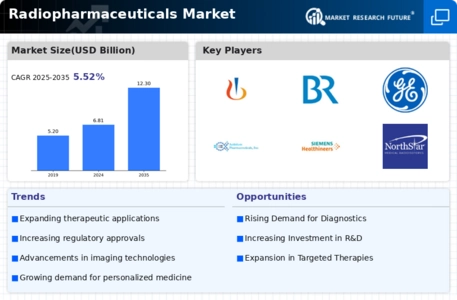
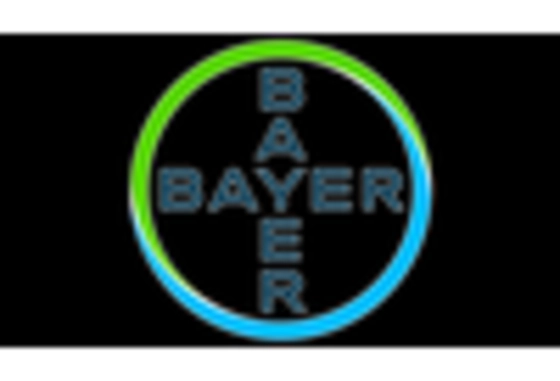

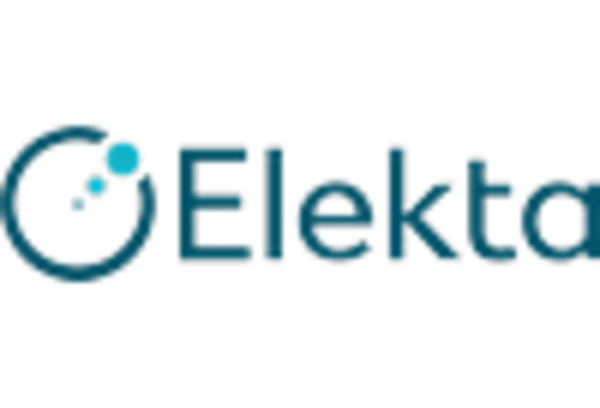
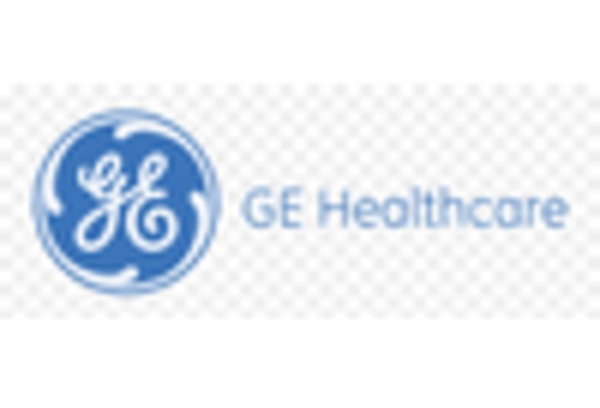
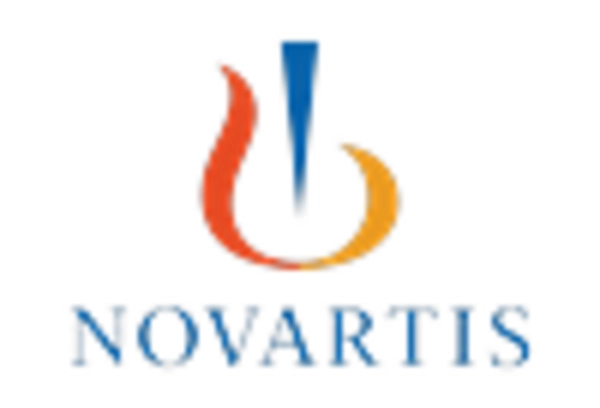


Leave a Comment